

19 14 24 28 Why Emotionally Tone Deaf Brands Bomb In Today’s Empathy-Oriented Marketplace - Merilee Kern, MBA, The Luxe List Tackling Human Capital Management Challenges Through Analytics And Metrics - Frank Diassi, The Unicorn Group Enhance Customer Experience By Making Employee Experience Better - Shiela Mie Legaspi, Cyberbacker Secondary Meaning: The Measure Of Brand Strategy - Jerry W. Thomas, Decision Analyst JULY 2023 • Vol.22 • No.07 (ISSN 2564-2057) FAMILY-BUILDING BENEFITS: WHY ORGANIZATIONS ARE GETTING IT WRONG - Liz Pittinger, Head of Customer Success, Stork Club
26 The Employee Benefits Space Is Changing: Here’s How Companies Can Adapt How ICHRAs can help companies win
10 Are Virtual Selling Programs Here To Stay? Aligning your customers’ shopping experience with their needs and desires - Guillermo Salazar, CEO and Co-Founder, IrisCX


16 The Recruitment Management Triangle
software development and project management can teach us about recruiting - Dr. Evan Shellshear, Managing Director and Group CEO, Ubidy
21 What Happened To The Character? What you lose by neglecting character in leadership - Dave Kahle, President, Kahle Way Sales Systems
32 The Need For Speed In Business Success Attracting and retaining customers - John Tschohl, Founder and President, Service Quality Institute
Articles
What
and retain talent - Matthew Kim, CEO and Co-Founder, SureCo
Family-Building Benefits:
Importance of comprehensive familybuilding solutions in today’s workplace - Liz Pittinger,
of Customer Success, Stork Club 07 On the Cover INDEX HCM Sales, Marketing & Alliance Excellence JULY 2023 Vol.22 No.07 ( ISSN 2564-2057)
Why Organizations Are Getting It Wrong
Head
Why Emotionally Tone Deaf Brands Bomb
In Today’s Empathy-Oriented Marketplace
Fostering authentic connections with audience
-
Merilee Kern, MBA, Founder, Executive Editor and Producer, “The Luxe List”
Top Picks 14 19
Tackling Human Capital Management Challenges Through Analytics And Metrics

Key metrics your HR team can gain from an HCM solution



- Frank Diassi, Chairman of Unicorn HRO and Managing General Partner, The Unicorn Group
Enhance Customer Experience By Making Employee Experience Better Happy employees = happy customers
- Shiela Mie Legaspi, President, Cyberbacker
24 28
Secondary Meaning: The Measure Of Brand
Strategy
How a brand’s “secondary meaning” impacts its identity
- Jerry W. Thomas, President and Chief Executive, Decision Analyst
INDEX
Attn: HR Solution Providers!
Research
HR.com makes HR Professionals smarter and we are sure your solutions do as well.
That being said, we understand how hard it is to market in the Human Capital space, get the attention of your target audience and show HR departments that you are a valuable resource. So, how do you overcome this hurdle?
Easy. Work with HR.com.
With over 19 years experience working with HR solution providers, we give over 1,200,000 HR professionals access to the tools and resources they need to succeed. We work side-by-side with HR solution providers to help them generate sales leads, grow market share, build brand awareness and promote industry expertise.
Checkout our growing list of tools and resources our vendors can take advantage of to get noticed by HR professionals!
HR Marketing Institute
The HR Marketing Institute (HRMI) is the ONLY community of Marketing Professionals in the Human Capital space dedicated exclusively to the issues and needs of the marketing professionals and their businesses. This is a community of Marketing professionals who dedicate their time to marketing in the Human Capital space and who support each other to make the right decisions so that your marketing initiatives deliver the impact you need to succeed. Membership includes networking with peers, face to face summits, webcasts, research and benchmarking tools.
Webcasts and Virtual Events
Thought Leadership, Lead Generation and Educational Content
HR.com’s Webcasts and Virtual Events are more than an exercise in brand awareness. They are a comprehensive and groundbreaking way of generating tangible sales leads, while showcasing you as an industry authority to a captive audience of clients, prospects and the entire HR.com global community, giving you a greater market reach. In addition, HR.com’s one-hour webcasts provide valuable education and certification credits for today’s forward-thinking HR professionals.
Build your brand, content marketing strategies, and thought leadership with exclusive HR.com research. Choose between custom featured research or state-of-the-industry research sponsorship. With custom featured research, we work with you to develop research on the topic of your choice or align your brand with any of this year’s State of the Industry hot topics to highlight the latest HR trends. No matter which research strategy you choose, come away with your very own branded research report and infographic, establish yourself as an industry thought leader by presenting a webcast, get key insights from the opinions of highly qualified HR professionals, and maximize your ROI, and build a healthy sales funnel with over 1,000 qualified leads.
Managed Email Campaigns
Looking to expand your marketing reach? Build long-term customer loyalty? Generate high response rates? Drive website traffic? The value of HR.com’s opt-in direct email program allows you to do just that. Nurture potential buyers on a consistent basis through our managed campaign program. Deliver your message directly to HR decision makers’ inboxes. HR.com’s direct email lists are 100% optin, GDPR, CASL, and CAN-SPAM compliant and contain only the most exclusive names and companies in the human capital industry.
Online Advertising
Onsite advertising is a great way to reinforce brand and profile new products associated with a product launch. HR.com offers a variety of online advertising solutions including banner ads and premier homepage positioning making it a cost-efficient option for maximum brand exposure.
Buyer’s Guide
Be the Answer to the Questions HR Decision Makers are Asking

The HR.com’s Buyer’s Guide is where HR departments from around the world turn first when they need products and services. Put your company at the top of their list and get listed with the resource that HR professionals and decision makers trust.
Excellence Publications Interactive Targeted Learning ePublications
Aimed at Reaching Your Core Audience
HR.com’s 12 targeted and focused monthly online publications provide an invaluable collection of high-quality HR content and experts’ solutions to our members. Ten of our publications now feature themed editions that focus on specific topics. Sponsorship of research reports and webcasts aligned with the themes are also available.
For more information phone: 1.877.472.6648 | email: sales@hr.com | www.HR.com
Exclusive HR.com research
Our solutions will get you more clients, brand exposure, sales –and a marketing community too!
Editorial Purpose
Our mission is to promote personal and professional development based on constructive values, sound ethics, and timeless principles.
Excellence Publications
Debbie McGrath CEO, HR.com - Publisher
Sue Kelley Director (Product, Marketing, and Research)
Babitha Balakrishnan and Deepa Damodaran Excellence Publications Managers and Editors
Deepak S Senior - Design and Layout
HCM Sales, Marketing & Alliance Excellence Team
Deepa Damodaran Editor

Nataraj Ramesh Design and Layout (Digital Magazine)
Vibha Bangalore Magazine (Online Version)
Submissions & Correspondence
Please send any correspondence, articles, letters to the editor, and requests to reprint, republish, or excerpt articles to ePubEditors@hr.com
For customer service, or information on products and services, call 1-877-472-6648
Benefits
Debbie Mcgrath Publisher, HR.com
Workplace benefits policies have been in the news recently for several reasons.
In January, Twitter CEO Elon Musk made headlines when he slashed the company’s benefits package, eradicating fertility benefits like in vitro fertilization (IVF), adoption sponsorship and egg freezing. Hundreds of Twitter employees who previously relied on financial assistance to access fertility services were left to pick up the pieces.
The war on benefits doesn’t stop at Twitter.
Why are these offerings the first victims of downsizing during challenging economic times? The answer to this question is nuanced and complicated — just as complex as the history of benefits in the workplace.
For many, it boils down to the perception that certain benefits are nice to offer, but not a must-have.
Read Stork Club Head of Customer Success Liz Pittinger’s article, Family-Building Benefits: Why Organizations Are Getting It Wrong, where the author delves deeper into the topic and will help us understand
Deepa Damodaran Editor, HCM Sales, Marketing & Alliance Excellence

Are they?
the importance of comprehensive family-building solutions in today’s workplace.
In Why Emotionally Tone Deaf Brands Bomb In Today’s Empathy-Oriented Marketplace, Merilee Kern from The Luxe List argues why fostering authentic connections with audience is crucial today.
Learn what software development and project management can teach us about recruiting in Ubidy MD and Group CEO of Ubidy Dr. Evan Shellshear’s article, titled The Recruitment Management Triangle
Also, read Are Virtual Selling Programs Here To Stay? by Guillermo Salazar from IrisCX, and Tackling Human Capital Management Challenges Through Analytics And Metrics by Frank Diassi from The Unicorn Group.
That is not all. We also bring you a few other expert columns, in this edition of HCM Sales, Marketing & Alliance Excellence and hope these will help you achieve excellence in your sales and marketing efforts.
Happy Reading!
HCM Sales, Marketing & Alliance Excellence (ISSN 2564-2057) is published monthly by HR.com Limited, 56 Malone Road, Jacksons Point, Ontario L0E 1L0 Internet Address: www.hr.com
Disclaimer: The views, information, or opinions expressed in the Excellence ePublications are solely those of the authors and do not necessarily represent those of HR.com and its employees. Under no circumstances shall HR.com or its partners or affiliates be responsible or liable for any indirect or incidental damages arising out of these opinions and content.
EDITOR’S NOTE
are nice to offer, but not a must-have.
Subscribe now for $99 / year And get this magazine delivered to your inbox every month Become a Member Today to get it FREE! SIGN UP OR For Advertising Opportunities,
Copyright © 2023 HR.com. No part of this publication may be reproduced or transmitted in any form without written permission from the publisher. Quotations must be credited.
email: sales@hr.com
Write to the Editor at ePubEditors@hr.com
In a world of unparalleled challenges (global pandemic, racial injustice, political rivalry, digital 4.0, emotional malaise), uncertainty reigns. Finding opportunity in this context requires harnessing uncertainty and harnessing starts with reliable, valid, timely, and useful information. The Excellence publications are a superb source of such information. The authors provide insights with impact that will guide thought and action.

Excellence publications are my ‘go-to’ resource for contemporary and actionable information to improve leadership, engagement, results, and retention. Each edition offers rich and diverse perspectives for improving the employee experience and the workplace in general.


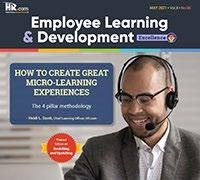
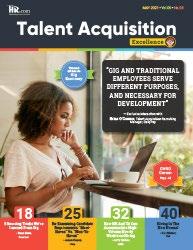
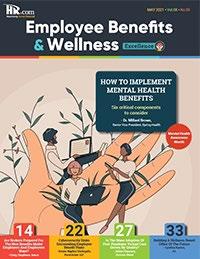
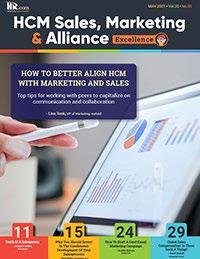


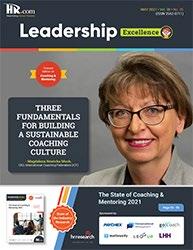
I regularly read and contribute to Leadership Excellence and Talent Management Excellence. I use many of the articles I read to augment my own presentations and I often share the articles with my clients. They are always quick, right on target for the latest issues in my field, and appreciated by my clients. If you want to stay up to date on the latest HR trends, choose a few of the different issues from the Excellence series of publications.
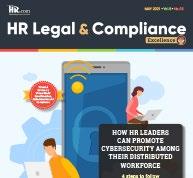

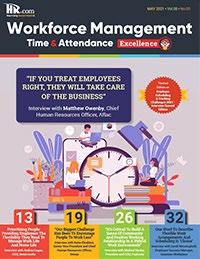
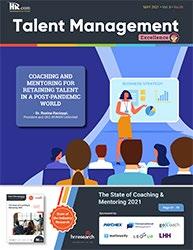
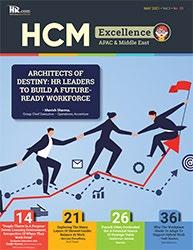
We’re eager to hear your feedback on our magazines. Let us know your thoughts at ePubEditors@hr.com
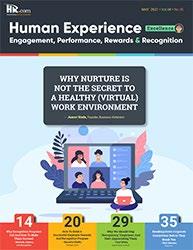 Dave Ulrich
Rensis Likert Professor, Ross School of Business, University of Michigan Partner, The RBL Group
Julie Winkle Giulioni Author, Virtual /Live Keynote Presenter, Inc.’s Top 100 Leadership Speakers
Dr. Beverly Kaye CEO, BevKaye&Co.
Dave Ulrich
Rensis Likert Professor, Ross School of Business, University of Michigan Partner, The RBL Group
Julie Winkle Giulioni Author, Virtual /Live Keynote Presenter, Inc.’s Top 100 Leadership Speakers
Dr. Beverly Kaye CEO, BevKaye&Co.
WHY EXCELLENCE PUBLICATIONS?
Family-Building Benefits: Why Organizations Are Getting It Wrong
Importance of comprehensive family-building solutions in today’s workplace
By Liz Pittinger, Stork Club
Severalmajor publications have recently released stories about benefits policies. This publicity isn’t necessarily for good reasons. For example, in January, Twitter CEO Elon Musk made headlines when he slashed the company’s benefits package, eradicating fertility benefits like in vitro fertilization (IVF), adoption sponsorship and egg freezing. Hundreds of Twitter employees who previously relied on financial assistance to access fertility services were left to pick up the pieces.
The war on benefits doesn’t stop at Twitter. Why are these offerings the first victims of downsizing during challenging economic times? The answer to this question is nuanced and complicated — just as complex as the history of benefits in the workplace. For many, it boils down to the perception that certain benefits are nice to offer but not a must-have.
Until recently, many decision-makers regarded fertility and other family-building solutions as fringe benefits. However, the last decade has transformed the workforce. Countless employees have adopted a new view on work-life balance and productivity, leading to updated expectations for HR departments. Now, when an employer misses the mark, employees are far more willing to quit and find better
accommodations. Some may call this the Great Resignation; I refer to it as the Great Confrontation.
Top talent is a hot commodity, and employees are willing to consider better offers. Yet that also means current employees could choose to leave under the right circumstances. HR leaders must balance attracting external talent and incentivizing top performers to stay. SHRM estimates the cost of replacing an employee is up to 200% of the departing employee’s salary, making it easy to understand why retention is a top priority across all organizations. And companies with a strong diversity, equity and inclusion (DEI) strategy typically outperform those without in terms of revenue, market share and retention.
Many factors contribute to a positive and meaningful work environment. However, impactful incentives like family-building benefits are singular in their ability to make an outsized difference in the decisions of prospective and current employees. Here is why yesterday’s “nice-to-have benefits” have become so mission-critical for both retaining employees and supporting the company’s overall growth and profitability.
Submit Your Articles HCM Sales, Marketing & Alliance Excellence presented by HR.com JULY 2023 7 COVER ARTICLE
Quality Reproductive Care Is Life-changing
Benefits have an indelible effect on employees’ lives. We understand this in the context of traditional offerings like healthcare insurance because, at one point or another, we’ve all relied on these solutions to pay for a steep medical bill or provide a loved one with a check-up or surgical procedure. Now, consider that infertility in the U.S. outpaces chronic disease and maternal mortality rates in all other industrialized nations
When do women typically leave the workplace? When they have a baby or when they reach menopause. If you aren’t supporting women at these key moments in their professional careers, ask yourself: Is your DEI strategy robust enough?
From reproductive healthcare options to hormone replacement therapy, family-building benefits can change lives and significantly impact retention for critical members of your workforce. For example, a woman is 50% more likely to quit her job after having a baby if she has to pay for fertility treatments out of pocket. However, when the organization covers fertility treatments, she is 88% more likely to return to work.
And how do traditional healthcare plans support Black employees? Not only are Black women two times more likely to experience infertility, they are three times more likely to die from childbirth-related complications compared to White mothers.
To address the complications of childbirth for BIPOC members, look no further than doula care. High-quality and culturally sensitive doula care is proven to improve pregnancy outcomes for expectant Black mothers. This is evidenced by a reduction in the number of C-sections rendered, an increased percentage of full-term births and lower rates of postpartum depression.
Family-building benefits provide birthing persons access to this high-quality and life-changing — even life-saving — care. Without their employer’s benefits package, many birthing persons would often not have access to doula care (or other reproductive offerings like postpartum care and back-to-work coaching).
That is because, unfortunately, the costs associated with some family-building solutions place them out of the reach of employees paying out-of-pocket. Consequently, vital but non-medically necessary options like fertility therapy are ignored. Birthing persons — and their partner, if relevant — experience higher rates of isolation, depression and anxiety as a result.
On the other hand, employees with access to family-building benefits are healthier, happier and more productive. These employees also experience less stress related to financial burden, which remains a leading cause of workplace anxiety. By providing these offerings, employers alleviate their employees’ concerns related to family, health and finances, allowing them to satisfy and exceed their daily responsibilities.

Benefits Must Evolve to Meet the Needs of the Modern Workforce
Times are changing. On a micro-scale, we’ve witnessed a shift toward operations-focused expenditures in response to inflation and rising interest rates. But on a macro level, much more significant changes have occurred in our daily working environments. The eldest of Gen Zers have entered the workforce. Beyond that, many organizations have chosen to align with new and improved environmental, social and governance (ESG) principles because the economic data shows that’s good business.
Family-Building Benefits: Why Organizations Are Getting It Wrong
Submit Your Articles HCM Sales, Marketing & Alliance Excellence presented by HR.com JULY 2023 8
Simultaneously, young professionals overwhelmingly value their organization based on commitments to DEI and ESG. In fact, 76% of job seekers say workplace diversity is integral to their decision to take a job. And many of these prospective applicants seek genuine commitments to an inclusive workplace instead of workplace platitudes. The result? Workplaces creating an equitable environment for all employees will win out in the search for top talent.
Notably, many family-building solutions are relevant for diverse populations. For example, although single parents and straight couples frequently use IVF treatments, it’s an especially vital offering for LGTBQ+ individuals. More than half of LGTBQ+ millennials (63%) plan to have children with the help of assisted reproductive technologies. Other popular forms of conception for LGBTQ+ individuals include surrogacy and adoption, also covered by leading family-building programs.
Many of us, not to mention many of our colleagues and friends, belong to the LGBTQ+ community. Yet traditional benefit offerings have lagged in accommodating LGBTQ+ parental journeys. Consider that the average IVF cycle costs more than $30,000, and most parents-to-be require multiple cycles to become pregnant. This creates an undue financial burden on all employees undergoing IVF.
The price tag of IVF treatments is enough to dissuade prospective applicants from accepting an offer at an organization without family-building benefits. Organizations that refrain from offering these benefits foster a less inclusive environment where employees feel unheard and undervalued — especially diverse employees. And in the modern workforce, this environment is unacceptable.
Moreover, family-building solutions go a long way toward alleviating environmental and sociological factors that influence employees’ well-being and health. These factors, known as the social determinants of health (SDoH), include environmental surroundings like neighborhood and social/community context as well as social factors like economic stability and access to education. By making an effort to understand their employees’
distinctive SDoH, employers can provide a more beneficial and tailored benefits package that allows employees of all backgrounds to enjoy equitable access to healthcare.
How to Select Benefits that Reflect Well on Your Organization
Keep your organization’s HR offerings from making news for the wrong reasons. Slashing or neglecting family-building benefits is a genuinely fatal error. After all, consolidated coverage platforms for family-building offerings offset the coverage costs for employers, which can actually lower benefit costs over time.

When considering which suite of benefits to offer your employees, use your organization’s ESG and DEI targets as a guiding light. Doing so will ensure that your benefits package aligns with the organization’s mission and caters to the preferences of current and future employees.
It’s also critical to consider organization-specific factors. For example, fully remote offices may benefit from geographically non-specific benefits like travel reimbursement, which covers the costs of travel to medical services located outside their jurisdiction.
The key to success with benefits is to offer comprehensive solutions that allow your employees to be seen, heard and understood. In 2023, that undoubtedly includes family-building solutions. And do not let competitors fool you — organizations that drop family-building solutions are falling behind in inclusivity. As a result, they’re losing the highly competitive race for top talent. And that’s a cultural loss that will be difficult to rebuild.
you like to comment? Liz
Would
Pittinger is the Head of Customer Success at Stork Club
Family-Building Benefits: Why Organizations Are Getting It Wrong Submit Your Articles HCM Sales, Marketing & Alliance Excellence presented by HR.com JULY 2023 9
Are Virtual Selling Programs Here To Stay?
Aligning your customers’ shopping experience with their needs and desires
By Guillermo Salazar, IrisCX
Theworld is becoming increasingly digital, including the sales process. Virtual selling is the next major wave of e-commerce, as many brands evolve away from brick-and-mortar stores.
While brand e-commerce sites have supplemented traditional selling for over two decades, there are still some challenges. For example, in the interest of providing customers with more choice, consumers are often overwhelmed by the search results, which may number in the hundreds or thousands. Even a brand-specific search can result in the paradox of choice.
Complex products are especially challenging to sell online despite e-commerce improvements.
For example, the onus is on the customer to make their decision based on viewing different product sizes and colors, reading specifications, seeing the product in 3D, and perhaps viewing a video. Customers would prefer
expert insights and recommendations, resulting in a simpler shopping experience that is more efficient and aligned with their needs and desires.
This is where virtual selling comes in. Brands have told us they are seeing a 300% increase in customer order value when the customer receives an in-home consultation. Similarly, coupon redemption rates rise 11-fold from the usual one percent.
Why Virtual Selling Is Becoming More Popular
The Covid-19 pandemic forced organizations to digitize faster than planned. Suddenly, business meetings and social gatherings occurred online instead of in person. Because the situation persisted throughout 2021 and 2022, consumers became more comfortable with virtual interactions, which opened the door to new selling opportunities.
Now, consumers ask themselves, “Why should I drive to a store
and wait for someone to assist me, when I can get personalized assistance from home?”
Moreover, the consumer’s home is a better place to get advice, such as which home furnishings or appliances would be best based on budget considerations, personal preferences, room space and layout.
Instead of the buyer and concierge texting photos to each other – which is insecure, time-consuming, awkward and inefficient – the buyer can show the concierge a live video of the space in which the appliance or piece of furniture will sit.
One of the newer use cases is IoT. Increasingly, formerly analog products, such as thermostats and doorbells, are now connected to the internet and controlled via smartphones and IoT devices, such as Amazon Echo. As more products become digitalized and complex, consumers want expert assistance to be confident they are buying the right thing.
Submit Your Articles HCM Sales, Marketing & Alliance Excellence presented by HR.com JULY 2023 10
Who Wants a Virtual Selling Experience
All things digital tend to be most closely associated with Millennials and GenZ because they are digital natives. However, the sweet spot tends to range between persons aged between 35 and 55 years.
These consumers buy the most outdoor products, such as barbeques, patio furniture, lawn mowers, and other high-ticket items that are not purchased often. Buyers do not understand these products as well as others they buy more frequently. Hence, they tend to do a lot of online research, but the glut of possibilities leaves them with more confusion than clarity.
Brands are starting to differentiate themselves by
offering a virtual sales option because they know it leads to higher conversions. As an analogy, individuals are more comfortable making choices about an HVAC system or roof tiles when an expert, such as the HVAC installation company representative or roofer, makes a recommendation.

There are critical moments in a buying cycle when a customer decides to proceed. When an expert helps guide the buyer through the buying decision, it increases conversions because it removes friction from the process and the consumer trusts their decision.
For brands, virtual selling provides a means of gathering valuable buyer feedback that is difficult to get unless they
spend millions on focus groups and other primary research. Even then, insights gathered from a focus group or survey participants may not translate to the individual customer. Brands are supplementing traditional research with social listening and other digital mechanisms to study trends, but again, those methods do not allow a brand to understand the needs of an individual customer.
Brands may also structure relationships with influencers, who share their personal experiences and opinions with followers, but virtual selling does not work for complex products in that context. Also, influencers are providing one-to-many recommendations, not personalized recommendations.
Are Virtual Selling Programs Here To Stay?
Submit Your Articles HCM Sales, Marketing & Alliance Excellence presented by HR.com JULY 2023 11
How Experts Can Provide Personalized, Expert Advice Quickly

Brands are hiring virtual concierges to do the same thing Nordstrom did years ago to differentiate itself: provide customers with personalized assistance. This approach helps the consumer narrow a choice of potentially thousands to a manageable number of relevant options.
But can an expert be an expert on every detail of every product? Of course not. They need help. So, part of the virtual selling experience must occur behind the scenes with AI sifting through the universe of possibilities based on a guided conversation.
Brands can do this in a bespoke way to ensure their virtual selling experience is comfortable for the buyer and easier for the concierge to navigate. For example, a brand
might ask about the customer’s budget, buying window, whether they are considering competitors and why.
All this happens virtually, so the customer does not have to wait several days or weeks for a home consultation and they do not need to worry about a stranger entering their home.
Virtual Selling Is the Future of e-Commerce
It is only recently that virtual selling is working for brands. In addition to increasing average order value, virtual selling can also help boost customer loyalty and turn brand skeptics into advocates. The secret to success is providing a human touch within the modern digital context.
For several decades, customer engagement has been brand-centric versus customer-centric. Businesses are
experiencing the fallout, as evidenced by bounce rates and abandoned shopping carts. Brands think they are customer-centric, but consumer attitudes paint a different picture.
Customers want to shop on their terms, not a brand’s. Virtual selling allows them to do that effectively, in a way that is more satisfying than online searches. It provides a powerful way for brands to cater to individual customers, profitably.
Would you like to comment?
 Guillermo Salazar is CEO and Co-Founder of IrisCX.
Guillermo Salazar is CEO and Co-Founder of IrisCX.
Are Virtual Selling Programs Here To Stay? Submit Your Articles HCM Sales, Marketing & Alliance Excellence presented by HR.com JULY 2023 12
C AL LI N G AL L H R MAR K ETIN G
GU R U S - SHAR E
YO U R E X PERT I S E
W I T H OTHER S !
Are you an exper t in Marketing in the Human Capital space? If yes, you’re invited to submit ar ticles for inclusion in our publication, HCM Sales, Marketing & Alliance Excellence!
This publication helps Sales and Marketing professionals in the Human Capital space learn emerging trends to help them in their business and now you can share your marketing exper tise with them!

Check out our magazine here
Our readers are interested in a number of topics including:
● Marketing hacks for HR Solution Providers
● Building relationships with current and potential clients
● Tradeshow expo halls - best practices for ROI
● Branding and your online presence
● Aligning Marketing roles with your business growth strategy
● Marketing Tactics to increase ROI
● Mar tech Enablement
● Marketing Analytics
● how to count its sale value
● How to nur ture stronger par tnerships between marketing and sales
● and analysts
● Market planning process
● How to build a brand
● How to win with PR
● How to use Social to drive brand recognition and sales
● Your approach to producing and disseminating meaningful thought leadership
● How marketing needs to evolve for success
Ar ticle submission deadline: 1st of each month 1
Kindly let us know if you’d be interested to feature your ar ticle in our magazine by emailing the editor at ddamodaran@hr.com. You can also review our submission guidelines by clicking here
here.
Also, if you are in marketing in the human capital space, we invite you to host a webcast for our HR Marketing Institute. For more details, please email Shelley Marsland-Beard at smarsland@hr.com
Why Emotionally Tone Deaf Brands Bomb In Today’s EmpathyOriented Marketplace
Fostering authentic connections with audience
By Merilee Kern, MBA, The Luxe List
Intoday’s post-Covid era, there has been a profound and pivotal cultural shift toward empathy and marketplace engagement that is requiring business leaders, marketing engines and companies at large to enhance these kinds of emotions quotient (EQ) skillsets to meet new societal expectations.
A new study, “Watch your Language: Think Like A Brand, Speak Like A Person,” on the state of empathy in consumer-brand relationships found that nearly 2 in 3 Americans say empathy has decreased a full 27% in the last year despite shared societal challenges. This is despite other report findings that 47% of Americans want to hear more human-centric stories in the news and from brands and that 37% of consumers say that they enjoy reading content from brands and that it makes them feel more connected to the companies.
“I cannot emphasize enough the importance of demonstrative business empathy — the kind that fosters authentic brand storytelling and sustainable consumer-brand relationships,” says branding and messaging authority Martha Marchesi, CEO
of JK Design
“A brand that lacks empathy may come across as cold, indifferent, or out-of-touch in its messaging, which often creates a disconnect between the brand and its audience,” Martha says. “This can not only lead to a weakened brand image but also outright customer dissatisfaction. Egregious and extreme cases of brands being emotional ‘tone deaf’ can cause a brand to be publicly ‘flamed’ on social media and elsewhere.”
Martha indicates a few tactical ways businesses can readily exhibit empathy in brand messaging to create a more deeply engrained bond with the audience. These include:
● Addressing common and specific customer pain points like that related to productivity, financial processes and support.
● Employing storytelling that highlights relatable customer experiences like that related to cost savings, productivity, efficiencies and customer support.
● Utilizing genuine customer testimonials, stories, and case studies that articulate those first-hand brand experiences.
Top Pick Submit Your Articles HCM Sales, Marketing & Alliance Excellence presented by HR.com JULY 2023 14
“It’s also imperative to ensure that empathy is conveyed in a genuine, believable way that will resonate with the intended audience.” Martha asserts. “One easy way to achieve this is for public communications from company executives, or that represent the brand as a whole, to display vulnerability, which fosters relatability and trust.”
Empathy-driven emotional intelligence is a key marketing strategy. It should be upheld as a brand’s North Star from which to craft its story, develop inspired positioning and brand architecture, empower its sales force, create engaging content, collaborate with its creative team, transform the typical e-commerce experience into a story-driven customer journey, measure results and so much more.
Ultimately, when a brand exudes empathy it demonstrates an emotional intelligence that addresses the sentiments, concerns and needs of its customers. Brands should endeavor to aptly emote in order to cultivate more meaningful consumer-brand relationships. By making impactful and authentic emotional connections with their audience and continuously fine-tuning that approach, companies can drive quantifiable results — the kind that creates
even unforeseen advantages and helps not just achieve, but exceed, mission-critical goals.

Source: https://www.prnewswire.com/news-releases/ empathy-among-americans-suffers-sharp-decline-yet-brands-are-expected-to-make-emotional-connections-with-consumers-301796240. html
Merilee Kern, MBA, is an internationally-regarded brand strategist and analyst who reports on noteworthy industry change makers, movers, shakers and innovators across all B2B and B2C categories. This includes field experts and thought leaders, brands, products, services, destinations and events. Merilee is Founder, Executive Editor and Producer of “The Luxe List” as well as Host of both the “Savvy Living” lifestyle and travel and “Savvy Ventures” business TV shows.

Why Emotionally Tone Deaf Brands Bomb In Today’s Empathy-Oriented Marketplace
you like to comment? Submit Your Articles HCM Sales, Marketing & Alliance Excellence presented by HR.com JULY 2023 15
Would
The Recruitment Management Triangle

What software development and project management can teach us about recruiting
By Dr. Evan Shellshear, Ubidy
Insoftware development and project management, there is a fundamental set of constraints on what is possible when delivering a project, known as the project management triangle. According to Wikipedia, the project management triangle’s premise is that:
● The quality of work is constrained by the project’s budget, deadlines and scope (features/quality).
● The project manager can trade between constraints.
● Changes in one constraint necessitate changes in others to compensate.
What these principles mean is that you can not have everything at the same time, that is:
● Time: a project can be completed faster by increasing budget or cutting scope (or quality).
● Scope: increasing scope may require increases in budget and schedule.
● Cost: cutting budget without adjusting schedule or scope will lead to lower quality.
The three elements are always in tension. This understanding has led to the quip: “Good, fast, cheap. Choose two.”
In the world of recruitment, we have an analogous situation: time, cost, and candidate requirements (the
final being similar to scope/quality and often arising in the form of specialization or skill requirements) form a fundamental recruitment management triangle. Although this clearly applies to internal recruitment teams, in this article we will focus on recruitment agencies and when engaging a third party, ceteris paribus, employers face the challenge of choosing two out of the three recruitment constraints, similar to project managers.
Although this equilibrium can be shifted by finding a new agency that is able to provide better candidates for lower fees or establishing long-term relationships to drive a better commercial outcome for employers, in a given recruitment relationship, employers must recognize that in a competitive market, if they demand fast candidate submissions for low fees to meet demanding briefs, recruitment agencies will simply go to other employers with much better arrangements. They will shift the equilibrium for themselves.
Submit Your Articles HCM Sales, Marketing & Alliance Excellence presented by HR.com JULY 2023 16
Hence, if employers want to achieve new levels of efficiency, they need to look to other solutions. With new technologies, such as recruitment agency marketplaces, this dynamic has been fundamentally shifted. In this article, we will explore how the project management triangle applies to recruitment and discuss how a recruitment agency marketplace can revolutionize the balancing act, ultimately leading to better outcomes for employers and recruiters.
Understanding the Recruitment Management Triangle
When acquiring talent, the recruitment process involves managing three key variables: time, cost, and candidate quality (or specialization). Just like the project management triangle in other industries, employers often find themselves having to make trade-offs when engaging a recruitment agency:
1. Time: Swift hiring is crucial for businesses aiming to fill critical positions quickly. However, fast-tracked recruitment on the agency side may compromise the quality of candidates selected and the thoroughness of the selection process.
2. Cost: Employers often face budgetary constraints when recruiting. Reducing funds allocated to agency budgets may involve compromises in terms of the resources allocated for candidate sourcing by agencies and even driving away top-performing agencies from an engagement.
3. Candidate Requirements: Identifying highly qualified candidates who possess the necessary skills, experience, and cultural fit is paramount. However, pinpointing such candidates may require more time and financial investment (both internally and externally).
How to Break Free of the Triangle: Recruitment Agency Marketplaces
Recruitment agency marketplaces provide a transformative solution to the traditional recruitment dilemma by expanding the possibilities within the recruitment management triangle. These platforms leverage technology and innovation to empower employers and recruitment agencies alike, leading to improved outcomes. The way they do this in each case is:
1. Enhanced Time Management: By utilizing advanced AI algorithms and automated matching systems, recruitment agency marketplaces significantly expedite the candidate selection process. Employers can benefit from a broader network of recruitment agencies that specialize in their industry, ensuring faster access to high-quality candidates. The streamlined workflow allows employers to save time while maintaining a rigorous selection process.
2. Cost Optimization: Recruitment agency marketplaces introduce a competitive environment among recruitment agencies bidding for employers’ recruitment needs. This competition naturally drives down costs, as agencies strive to offer competitive rates to secure placements. Employers gain access to a wider range of agency options, allowing them to compare costs and select the most cost-effective solution without compromising candidate quality.
3. Improved Candidate Match: Recruitment agency marketplaces present a vast pool of specialized agencies, each with unique expertise in specific industries or roles. Employers can tap into this diverse network to find agencies that possess in-depth knowledge and experience in their desired field. This specialization enhances the quality of candidates presented, ensuring a higher likelihood of finding the perfect fit for the role.
The Recruitment Management Triangle
Submit Your Articles HCM Sales, Marketing & Alliance Excellence presented by HR.com JULY 2023 17
Technology has allowed recruiters to break out of the traditional constraints formed around their work and recruitment marketplaces are the key to achieving it. For example, in challenging markets like the current one, recruitment marketplaces allow a step change in quality for a fixed fee and candidate requirements brief.

Achieving Optimal Outcomes with a Recruitment Agency Marketplace
Given the benefits of a recruitment agency marketplace, the question is how do employers practically achieve this? Recruitment agency marketplaces offer several key advantages that aid employers in achieving a balance between time, cost, and quality/candidate specialty:
1. Flexibility and Customization: Employers have the freedom to define their specific requirements, setting the parameters for time, cost, and candidate specialty. They can adapt these criteria based on the urgency of the hiring process, available budget, and the level of specialization needed.
2. Transparent Collaboration: Recruitment agency marketplaces foster a transparent and collaborative environment. Employers can actively engage with multiple recruitment agencies through a centralized platform, providing feedback and guidance throughout the process. This ensures alignment and enhances the quality of candidate selection.
3. Robust Management Tools: Recruitment agency marketplaces provide comprehensive tools and features that streamline and optimize the recruitment process. These tools enable employers to track progress, monitor key metrics, and gain real-time insights, facilitating data-driven decision-making.
Using the marketplaces is simple and employers can be receiving candidates in less than a day after the quick registration on a recruitment agency marketplace.
Conclusion
Recruitment will always be a field that is driven by relationships, people and non-quantifiable factors.
We can never take away the engagement part of a skilled recruiter (both internal and external) being able to marry the candidate’s temperament with a company’s culture. Recruiters will know if a candidate will suit an employer’s team, irrespective of whether their skills match or not. In spite of this, new technologies like recruitment marketplaces will elevate the recruiters with these skills to break the traditional recruitment paradigms.
The project management triangle applied to recruitment highlights the inherent trade-offs between time, cost, and candidate quality. While traditional recruitment processes constrained employers to choose two out of the three, the emergence of recruitment agency marketplaces has transformed this paradigm. By leveraging the power of technology, these marketplaces empower employers to achieve a more balanced approach, enabling faster hiring, cost optimization, and improved candidate specialty. As recruitment agency marketplaces continue to evolve, employers can expect enhanced outcomes, benefiting from a broader network of agencies, streamlined workflows, and a more efficient recruitment process overall.
Dr. Evan Shellshear is the Managing Director and Group CEO of Ubidy, and an expert in artificial intelligence with a Ph.D. in Game Theory from the Nobel Prize-winning University of Bielefeld in Germany. He has almost two decades of international experience in the development and design of AI tools for a variety of industries having worked with the world’s top companies on all aspects of advanced analytical solutions from optimization to machine learning in applications from HR to oil and gas, and robotics to supply chain. He is also the author of the Amazon best-seller, Innovation Tools.
Would you like to comment?
The Recruitment Management Triangle Submit Your Articles HCM Sales, Marketing & Alliance Excellence presented by HR.com JULY 2023 18
Tackling Human Capital Management Challenges Through Analytics And Metrics
Key metrics your HR team can
 By Frank Diassi, The Unicorn Group
By Frank Diassi, The Unicorn Group
Human capital management (HCM) solutions have become indispensable – making life easier for HR staff as they reduce day-to-day paperwork and streamline business processes. Such a solution can help HR staff perform a variety of functions,
gain
from an HCM solution
from benefits administration to payroll, as well as recruiting and job training, all in one, centralized system.
Top Pick Submit Your Articles HCM Sales, Marketing & Alliance Excellence presented by HR.com JULY 2023 19
It can also help managers track and assess metrics, and determine trends regarding new hires, employee retention, revenue, and performance.
Understanding the functions offered by an HCM solution and the metrics that can be measured enables managers to make better business decisions based on detailed insights and analytics.
Below are key metrics your HR team can gain from an HCM solution:
New Hires and Employee Turnover
New hires can tell HR staff a lot about whether their company is doing the right things to attract new talent. Using an HCM solution to track the main reasons why new hires choose to work for a company can be especially valuable. Moreover, an HCM solution can also be used to track why some new hires decide to leave after being on the job for only a short time. By assessing these factors, HR staff can ensure that the most talented staff are being hired and that they stay in your company. Doing so will also help HR staff to cut down on recruitment and training costs.
PTO and Employee Sentiment
Tracking vacation and personal days is important to help managers make better scheduling decisions and ensure projects are handled appropriately. It can also offer a look into team engagement.
If employees are frequently absent, it could be a strong indicator of dissatisfaction and potential turnover. Analyzing PTO trends can help HR personnel stay apprised of employee sentiment and productivity. Importantly, personnel can address any issues before they affect the bottom line.
Employee Performance
An HCM solution can be used to evaluate employee performance and track promotions to ensure top employees are being properly compensated and recognized for their hard work. On the other hand, if an employee is not meeting expectations, this data can be used to conduct a performance review, restructure teams, and set internal targets.
HR personnel can also use these insights to boost company morale. If productivity or engagement has decreased, it may be time to provide more support through employee well-being initiatives, additional training, and digital tools to improve efficiency.
Employee Satisfaction
One of the features that a newer HCM solution offers is an employee self-service portal. Rather than inundating HR personnel with time-consuming inquiries and requests, a cloud-based system allows employees to quickly access payroll information, deductions, time-off policies and healthcare plans. This sense of ownership and transparency in the process enables employees to feel more in control when managing their HR-related information and can greatly increase employee satisfaction.
Analytics and Insights
Overall, utilizing a modern, cloud-based human capital management solution to its utmost potential can enable HR personnel to tackle common human capital challenges. Detailed insights into the employee lifecycle will help organizations stay apprised of company culture, business challenges, and professional development initiatives.
Frank Diassi, Chairman of Unicorn HRO and Managing General Partner for The Unicorn Group, has over 40 years of experience in business leadership. Frank is a former Director of Mail-Well Corporation and Chief Executive Officer of Sterling Chemical. He had major corporate experience with Conoco Oil Company for 10 years where he held a senior business unit management position in the petrochemicals area.
Would you like to comment?
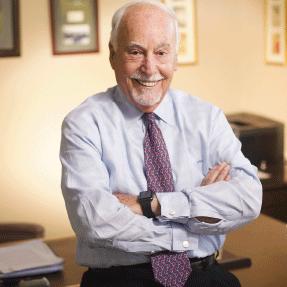
Tackling Human Capital Management Challenges Through Analytics And Metrics
Submit Your Articles HCM Sales, Marketing & Alliance Excellence presented by HR.com JULY 2023 20
What Happened To The Character?
What you lose by neglecting character in leadership
By Dave Kahle, Kahle Way Sales Systems
Higher character has been recognized, across generations and cultures, as one of the ideal qualifications for positions of leadership. Until recently. We have discarded the idea of higher character, and are paying the price.
In a recent training session, I recommended to a group of sales managers that they hire their next salesperson on the basis of that person’s character, rather than his/her skill, experience or knowledge.
A couple of them looked like Bambi being caught by a pair of headlines on a dark night in the middle of the road. The thought I had just expressed was incomprehensible. “Character? What on earth was I talking about?”
Unfortunately, the lack of understanding of the role that character plays in a person’s life, as well as in the larger national culture, is not limited to these couple of people. It looks to me like it is a pandemic, every bit as widespread as Covid-19. As a culture, we have lost the emphasis on character, and we are suffering the consequences.
First, let’s understand the concept. I like this Merriam-Webster definition of Character: the complex of mental and ethical traits marking and often individualizing a person, group, or nation: moral excellence and firmness
And from Wikipedia: Strength of mind; resolution; independence; individuality; moral strength He has a great deal of character.
A person’s character, more than anything else, determines his/her individual success. For decades I have had this in my database of pithy quotes:
Watch your thoughts: They become words.
Watch your words: They become actions.
Watch your actions: They become habits.
Watch your habits: They become character.
Watch your character: It becomes your destiny. Author unknown.
So, character is the combination of attitudes, habits, and values that make us who we are. These evidence themselves as patterns of behavior so that, in any combination of circumstances, we can be expected to act or react in a certain way. That is how people come to know our character – far more by what we do than what we say.
Some character traits are more desirable than others. For example, integrity is universally admired, but laziness is not. When a person evidences a combination of the more desirable character traits, he/she is said to have a higher character. The opposite, of course, is a lower character.
Submit Your Articles HCM Sales, Marketing & Alliance Excellence presented by HR.com JULY 2023 21
Because character so impacts the results a person achieves and the quality of his/her life, it ought to be top of our minds when we are called on to make important decisions about people. We should take a person’s character into the mix when we are making a determination as to how suitable a person is for a specific position. It does not matter if that position is an open sales position, or President of the United States, character should be the overriding issue.
That’s what wise and thoughtful people have said for eons and eons. You can find it in the Bible, for example. Among lots of other passages, there is this praise of a higher character:
A wife of noble character is her husband’s crown, but a disgraceful wife is like decay in his bones.
(Proverbs 12:4.)
And then there are multiple passages articulating the more desirable character traits: Here’s one:
Now for this very reason also, applying all diligence, in your faith supply moral excellence, and in your moral excellence, godliness, and in your godliness, brotherly kindness, and in your brotherly kindness, Christian love .(2 Peter 1: 5–8)
The founding fathers recognized the importance of higher character:
“Good moral character is the first essential in a man.” – George Washington.
Samuel
In more recent times, Martin Luther King Jr, in his “I have a dream” speech, had this to say: “I have a dream that my four little children will one day live in a nation where they will not be judged by the color of their skin but by the content of their character. August 28, 1963.
Imagine that. Being judged by the content of your character! Virtue! I’m concerned that, in recent years, we have been ignoring this age-old wisdom. In place of the ‘content of their character’ we hire people, promote them, and elect them for other reasons.
There is a set of desirable character traits that should define the folks we put into positions of leadership: Integrity, empathy, open-mindedness, personal responsibility, rational decision-making, self-control, patience, kindness and wisdom to name a few.
Politically, we elect people for such superficial attributes as their race, sex, ethnicity and political positions. I think that began with the Bill Clinton presidency. Prior to that, a politician’s character meant something. Gerald Ford, Jimmy Carter and Ronald Reagan were all said to have been ‘good people.’ With Clinton, questions of his character were stifled under the pressure of political expediency. The press pushed this mentality: “He holds these political positions, so we’re willing to pass on his character.“ As a nation, we gave him a pass. And this fueled the national disregard for character in our elected officials.
Benjamin Franklin said: “Only a virtuous people are capable of freedom.”
That started a trend among the press and the electorate to highly value more superficial characteristics. Who cares what his character is like, if he’s the same color skin, or the same ethnic background, or holds the same political positions? Honestly, if the nation had valued high character in its leaders, would we have had Donald Trump or Joe Biden?
What Happened To The Character?
“Nothing is more essential to the establishment of manners in a State than that all persons employed in places of power and trust must be men of unexceptionable characters.”
Submit Your Articles HCM Sales, Marketing & Alliance Excellence presented by HR.com JULY 2023 22
– Samuel Adams.
Adams said: “Neither the wisest constitution nor the wisest laws will secure the liberty and happiness of a people whose manners are universally corrupt.
If we valued high character in our new hires, would we have people who commit and then leave in a few months for a bit greener pasture? Would we have the turn-over rate that we have if we had hired more people of solid character, exhibiting personal responsibility and loyalty?
Would we have the talking heads on cable TV so eager to make rash generalizations and leap to unsubstantiated positions, if we had hired them for their integrity and ability to think?
If a higher character was on the qualification list, would our colleges be filled with professors who are more concerned with indoctrinating their students in what to think, then instilling the higher character ability to think?
If we had selected teachers of solid moral fiber, would we have all the teacher-student sexual liaisons that seem to be de rigor today? If we hired teachers of higher character, would we have so many of them objecting to the prohibition of teaching sexual preferences to kindergarteners?
The list goes on and on. The consequences of our foolishness crop up in every nook and cranny of our society. We’ve neglected higher character as a pre-requisite for positions of influence, and we’re paying the price.
Dave Kahle is the President of Kahle Way Sales Systems. He is one of the world’s leading sales authorities. He’s written twelve books, presented in 47 states and eleven countries, and has helped enrich tens of thousands of sales people and transform hundreds of sales organizations. His book, How to Sell Anything to Anyone Anytime, has been recognized by three international entities as “one of the five best English language business books.
Would you like to comment?
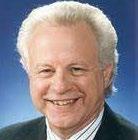
What Happened To The Character? Submit Your Articles HCM Sales, Marketing & Alliance Excellence presented by HR.com JULY 2023 23
Enhance Customer Experience By Making Employee Experience Better

Happy employees = happy customers
By Shiela Mie Legaspi, Cyberbacker
The customer experience within service-based businesses is of significant importance. However, some business owners may not realize
that the employee experience directly impacts the customer experience. In restaurants, retail stores, call centers and hotels, service-based employees are
on the frontlines of businesses, directly working with the lifeblood of those businesses: the customer.
Top Pick Submit Your Articles HCM Sales, Marketing & Alliance Excellence presented by HR.com JULY 2023 24
Business owners that place high importance on enhancing the employee experience will likely have a positive impact on their reviews and bottom line. Here are some ways to focus on the employee experience in your organization, and learn how these tips will help you improve your customer service-based business.
It All Starts with a Great Hire
From the posting of the job with a thoughtful and accurate description to the interviewing, hiring, and onboarding process, the beginning of the job matters in terms of employee experience. New employees want to feel as if they are more than just a number — that they were brought on for specific skills and talents. They want the onboarding process to be smooth and informative. They also want to feel welcomed in their new workplace. First impressions absolutely matter. In a recent study, it was found that “great employee onboarding” contributed to up to 82% better retention rates.
Empowered Employees Are Happy Employees
Sometimes, the service industry does not offer employees a lot of opportunities to have agency in their jobs. There are sometimes strict processes or busy periods where not following the same process each time could leave one in the weeds. However, giving employees a little space to be creative, to take ownership of their role and make decisions, and
to refrain from micromanaging or hovering can build trust between you and your employees. Employees who feel they have control over how or when things are done — if it serves the purpose of the business and the customer well — are more likely to walk away with a greater feeling of accomplishment.
Promote a Diverse and Inclusive Work Environment
DEI has been in the social lexicon in the last decade or so and for good reason. More and more business owners are realizing that a diverse and inclusive workspace is a strength. DEI initiatives strengthen not only your employee teams but also how customers view your business. DEI initiatives can even improve a business’ bottom line, as was found within 75% of businesses in a recent study by Gartner
Recognition and Reward
Employees like to be noticed for the good work they do. There are many ways a business can recognize its employees — from “Employee of the Month” designations to bonuses and days off. If employees are fostering great reviews from customers that is a good time to incentivize that behavior with recognition and rewards programs.

Rest and Self-care
The service industry can sometimes mean long hours, time
on one’s feet, and exhausting (sometimes, repetitive) labor. A business owner who encourages a healthy work/life balance is likely to create a better work environment overall. Owners and managers should work on creating an environment that gives regular breaks, fund downtime, robust benefits and PTO package, and recognizes the importance of family.
By pouring into your employees and showing them how valued they are, employees will be more apt to go above and beyond in their roles. With positive vibes radiating all around, your customers and employees will be happy and your business will thrive.
Would you like to comment?
Enhance Customer Experience By Making Employee Experience Better
Submit Your Articles HCM Sales, Marketing & Alliance Excellence presented by HR.com JULY 2023 25
Shiela Mie Legaspi is the President of Cyberbacker
The Employee Benefits Space Is Changing: Here’s How Companies Can Adapt

How ICHRAs can help companies win and retain talent
By Matthew Kim, SureCo
Whenthe U.S. health insurance exchanges debuted as part of the Affordable Care Act (ACA) 10 years ago, the hope was that they would provide Americans with a way to get affordable coverage. Last year’s Inflation Reduction Act further bolstered that sentiment by continuing to offer eligible
participants subsidies in the form of premium tax credits through 2025.
While that is a win for the 16 million Americans enrolled in individual plans, it does not account for the roughly 70% of workers who get their insurance through their employers, since
tax credits are only available to employees who are not offered an affordable option through their company.
Everyone – employers, employees, and benefits managers – need a better solution.
They are finding it with Individual Coverage Health Reimbursement Arrangements (ICHRAs). Introduced in 2020, this transformative approach to employee benefits allows employers to get out of the business of administering group health insurance – a role most companies never wanted to occupy in the first place. With an ICHRA, companies contribute tax-free dollars to their employees so they can purchase the health plan of their choice on the individual market.
Submit Your Articles HCM Sales, Marketing & Alliance Excellence presented by HR.com JULY 2023 26
Advantages ICHRAs offer to employers, employees, and the ACA include:
1. Bolstering the ACA Exchanges

The ACA marketplaces get stronger when younger, healthier Americans enroll in individual plans. ICHRAs promote this by allowing working-age employees to balance out the risk pool, thus keeping rates stable. Moreover, fixing the “family glitch” has allowed dependents to qualify for premium tax credits, which drives even more healthy, young people into the market.
2. Providing Reduced Premiums and Cost Predictability. With the limited options available to control group insurance costs, double-digit premium increases have become a reality for many companies. Renewal rates north of 15% are becoming the norm. ICHRAs offer relief by enabling employers to provide a fixed contribution for employees to obtain individual health insurance, effectively mitigating premium volatility due to high claims.
3. Granting Employees the Power of Choice and Network Flexibility. When it comes to their benefits packages, 65% of employees prioritize customization, and 73% of employees who had access to customized benefits reported increased loyalty to their employers. By allowing employees to select insurance plans that suit their specific needs, including varying levels of coverage, ICHRAs
promote individualization, while considering the diverse needs of an ever-changing workforce. With employees at different life stages and spread across various locations, traditional group benefits struggle to accommodate everyone’s individual healthcare needs. ICHRAs break free from the one-size-fits-all approach, allowing employees to tailor their benefits according to their unique circumstances.
for employers, impacting their ability to provide competitive benefits packages, and the expansion of remote work has further complicated the administration and accessibility of traditional group benefits. Employees are now dissatisfied with the lack of options tailored to their unique needs and are also feeling the squeeze of increased healthcare costs.
4. Empowering Employees by Putting Them in Control of Their Insurance Policies and Healthcare Decisions. With portability, employees can maintain their coverage even when transitioning between jobs, allowing them to keep their preferred plans and providers and ensuring continuity of care and peace of mind.
Traditional employer-sponsored group health coverage has remained largely unchanged for more than half a century. While needs have evolved, options have failed to do so.
Rising healthcare costs have led to unsustainable price increases
Ultimately, the introduction of personalized employer-sponsored benefits that ICHRAs provide marks a significant step towards creating the change needed for the healthcare system and employee benefits. As the tight labor market and concerns over employee retention persist, it is essential for companies to adapt to the changing needs and expectations of their workforce. By embracing this power of personalization, employers can unlock a new era of employee satisfaction, loyalty and empowerment while containing costs and promoting better health for all.
The Employee Benefits Space Is Changing: Here’s How Companies Can Adapt
Would you like to comment?
Matthew Kim is CEO and Co-Founder of SureCo.
Submit Your Articles HCM Sales, Marketing & Alliance Excellence presented by HR.com JULY 2023 27
As the tight labor market and concerns over employee retention persist, it is essential for companies to adapt to the changing needs and expectations of their workforce.
Secondary Meaning: The Measure Of Brand Strategy

How a brand’s “secondary meaning” impacts its identity
By Jerry W. Thomas, Decision Analyst
Abrand is some type of symbol, name or sign that identifies and distinguishes one product or service from competitive products or services. We can think of “identifies” and “distinguishes” as the practical functions of a brand.
There are also intangible elements, such as status signals, values, emotions and feelings, visual imagery, and personality traits that can be linked to a brand name.
Trademark law has an interesting concept called “secondary meaning,” and over time a brand acquires secondary meaning through usage and advertising. This secondary meaning is, in effect, a measurement of the culmination (the added value) of a brand strategy. For example, the word “caterpillar” refers to the pupa of a butterfly, a worm-like creature with many legs. That’s what we think of when we hear the word “caterpillar.”
However, the word “caterpillar” has also acquired secondary meaning as the identity of a brand of earth-moving equipment. In this context, “Caterpillar” has acquired massive secondary meaning: it stands for strength, steel, durability, and power; it stands for building, construction, and progress; it stands for diesel clatter and the color yellow. Brand strategy is about building the right type of secondary meaning for your brand.
Top Pick Submit Your Articles HCM Sales, Marketing & Alliance Excellence presented by HR.com JULY 2023 28
A great brand strategy pays huge long-term dividends. Brand strategy is built atop three powerful foundational concepts: the first is “concentration of effort and energy,” so that branding themes and messages break through all the noise and the clutter. The second foundational concept is brand “differentiation.” That is, how does a company differentiate its brand from those of competitors? This differentiation can be real. It can, for example, be a technological or performance advantage -- or a perceptual (e.g., superior brand imagery) advantage.
The third foundational concept is targeting. Which markets or market segments should a brand focus on? As you can see, there is similarity between the first concept and the third, in that both involve focusing marketing efforts. Once company leaders have exploited these basic concepts to their advantage to create a solid brand strategy, they can charge higher prices and enjoy greater customer loyalty. They then have some protection from the ups and downs of business cycles; they also have some insulation, or cushion, to protect against adverse publicity, and a good brand strategy makes all of their advertising

and marketing investments work better.
Brand strategy can be applied to the corporation itself. For example, Procter & Gamble is a very large consumer packaged goods company that owns hundreds of brands, such as Tide detergent, Crest toothpaste, Bounty paper towels, Downy fabric softener, Pampers diapers, and many others. Each of these brands has its own strategy and marketing plan to support it. Likewise, Procter & Gamble as a major corporation has its own strategy and marketing plan that is largely separate from the strategies of its many brands.
Secondary
The
Of Brand Strategy Submit Your Articles HCM Sales, Marketing & Alliance Excellence presented by HR.com JULY 2023 29
Meaning:
Measure
Most likely, P&G’s corporate strategy and marketing are focused on investors around the world who might choose to invest money in P&G and on governments and thought leaders globally that might want to impede or block the company’s commercial activities. The concepts of brand strategy apply to corporations as well as to their individual brands.
What are the core elements of a brand strategy? It involves asking basic marketing questions and thinking deeply about the answers. Questions include “who do we target?” “how do we position our brand vis-a-vis other brands?” “how do we differentiate our brand? “what type of a brand image do we want to portray?”
Company leaders also need to think about what kind of personality traits they want their brand to exhibit. What is their pricing strategy? If the category is potato chips, they may want the brand’s image and personality to be fun and bouncy, but if they’re selling caskets, they may choose a somber and serious tone. So, target market, differentiation, brand image and personality, and pricing must be woven together so they harmonize and reinforce each other to achieve synergy.
How does a company get to an optimal brand strategy? It’s complicated and takes a lot of iterations. Brand strategy results from a combination of a) good primary research and b) strategic vision. To create great
strategy, both inputs are needed. Typically, qualitative research techniques are relied upon (focus groups, depth interviews, ethnography) to really understand the deeper motivations and perceptions and how people feel and think about your brand and competitive brands.
The qualitative research helps define the language, concepts and ideas that can be employed to build the brand strategy. At this point in the process, the strategic vision of senior executives is incorporated into the strategy concepts, if possible. Now, the strategy concepts are ready for survey-based research to prove beyond doubt which strategy or strategies will lead to a winning brand.
Very often, a brand might identify 10 to 20 possible strategies based on the qualitative explorations and inputs from senior executives. Melding the research understanding with management’s strategic vision yields the very best strategy concepts to test. These vision-enhanced strategy concepts are evaluated by survey-based concept testing among target audiences.
Monadic testing is always recommended if corporate budgets can afford the investment. Then, it is test, refine and retest until decision-makers arrive at a strategy concept that scores high enough to justify the actual adoption and execution of the brand strategy.
Strategy concept testing among the target audience is the ultimate test. Sometimes, several concepts will score very high. In these instances, research leaders fall back on secondary considerations: which strategy provides the best differentiation? Which strategy can be best supported by media advertising? Which strategy is most defensible? Which strategy can last the longest?
At the heart of brand strategy is a concept called “positioning.” Strategic positioning is the core theme, or axis, of the brand strategy concepts. Positioning is the central premise, the guiding principle. If we think about marketing strategy as a giant puzzle, strategic positioning is a very large piece sitting right in the center of the puzzle.
The word “positioning” implies a target. A brand can be positioned against or in relation to a target market. This is a common starting point, and a brand can be positioned against a market segment rather than the whole market. A brand can be positioned against a consumer motive or consumer characteristic.
For example, Volvo positions its automobiles against consumers who are highly concerned about safety. Southwest Airlines positions its advertising and services against consumers who appreciate fun and a sense of humor. Dawn Dish- Washing Liquid positions its brand against
Secondary Meaning: The Measure Of Brand Strategy Submit Your Articles HCM Sales, Marketing & Alliance Excellence presented by HR.com JULY 2023 30
consumers who are greatly concerned about the damage of oil spills on birds and other wildlife. Mercedes positions its cars against higher income, upscale consumers. Positioning is a major part of strategy concepts as they are prepared for consumer testing.
It is important to test the strategy concepts, because if company leaders know their strategy is right and will work over the long-term, they can stick with the strategy through thick and thin. They can consistently invest advertising dollars to support the strategy because they have analytics and evidence that the strategy will work. They can invest money in the strategy knowing it will pay off in the long term.
Many great strategies have been abandoned before they ever had time to work because senior executives lost confidence in the strategy. It’s critically important for these leaders to know a strategy is right so they can commit to it and invest the advertising dollars to make the strategy pay off over time.
In testing strategy concepts it’s crucial to make sure that all of the strategy concepts follow the same content outline, are about the same length in number of words, and employ the same ratio of illustrations to words.
The degree of finish from one strategy concept to the next should be the same. Execution
does matter, and concepts at a higher level of finish and polish will tend to outscore strategy concepts at lower levels of finish. The monadic samples that will be used to test each concept should be demographically balanced and have the same proportion of brand users in each sample. Otherwise, the samples with the highest proportion of brand users will outscore the other samples and corresponding concepts.
Executional details like these can magnify and enhance brand strategy. Conversely, poor execution can doom a strategy. That’s why it is important to test the advertising to make sure it is as good as the strategy. Details of execution matter a great deal, and consumer research can help the tweaking, fine-tuning and retesting so all advertising details are harmonized in a way that magnifies the effect of the overall brand strategy.
The details of strategy execution can magnify and enrich the strategy. A wonderful example is Morton Salt. More than 100 years ago, the company developed a salt that did not cake up when exposed to high moisture. Morton Salt and its ad agency developed the great slogan, “When it rains, it pours.” The agency created an ad picturing a confident young girl with an umbrella walking in the rain and carrying a package of Morton Salt (accidentally pouring out of the package). The girl’s energy, self-confidence, and the bounce in her steps added immensely to the appeal and the attention-value of the ad.
One final thought: If the brand strategy is right, and if it’s consistently pursued, and if the advertising investments are sufficient to break through and build positive awareness, over the long-term that brand can become extremely valuable. In many companies, the value of the brands they own is much greater than the book value or the market value of the corporation itself. So, there’s a great prize at the end of the marketing rainbow if the brand strategy is right.
Jerry W. Thomas is President and Chief Executive of Decision Analyst
Would you like to comment?

Secondary Meaning: The Measure Of Brand Strategy Submit Your Articles HCM Sales, Marketing & Alliance Excellence presented by HR.com JULY 2023 31
In many companies, the value of the brands they own is much greater than the book value or the market value of the corporation itself.
The Need For Speed In Business Success
Attracting and retaining customers
By John Tschohl, Service Quality Institute
Ifeela need for speed.”
Actor Tom Cruise made that line famous when he played Maverick, a fighter pilot, in the movie “Top Gun.”
Unfortunately, most companies and employees do not share that need. They do not recognize the value of speed when it comes to attracting and retaining customers — and simply doing a good job, no matter the situation.
As technology has increased the demand for speed in everything we do, it is critical to the success of businesses and employees that they deliver it.

“ Submit Your Articles HCM Sales, Marketing & Alliance Excellence presented by HR.com JULY 2023 32
Most companies throughout the world have set up roadblocks to speed. They have established rules, policies, and procedures that handcuff employees in their dealings with customers. They do not trust employees to make empowered decisions in order to satisfy customers and solve their problems because they think those employees will give away the store. What they do not realize is that when employees are empowered to solve customers’ problems, those customers will not only continue to do business with you, they will reward you with word-of-mouth advertising as they tell others about their experiences with your company.
Employees are also at fault for the lack of speed in businesses today. Their mindset is locked into “slow,” which means that if you give them four hours or four days to complete a task, that is exactly the amount of time they will take to do so. Whether they are dealing with external customers or internal customers, in the form of coworkers or management, they simply are not driven to complete things swiftly.
How Employees Can Increase Speed
Organize. Assemble everything you need to tackle a project or solve a problem so that everything is at your fingertips. Then evaluate the time necessary to do what needs to be done.
Prioritize. Break the project down into a series of small steps. This will allow you to focus on the
details while understanding the “big picture” goals you must work toward.
Manage your time. Identify specific timelines you need to complete each section of the project and then work to meet — or beat — the time you have established to finish the entire project.
Recognize efficiency opportunities. Look for ways to incorporate your vendors or coworkers into projects early in the process. That means considering all the tools at your disposal, from the expertise of your coworkers to your organization’s technology assets.
Limit distractions. Every time you have a conversation at the water cooler or check your Facebook posts, you are getting off course, which can derail a project. That does not mean that breaks are not important. Take short ones throughout the day to quickly recharge, maintain your creativity, and stay ahead of fatigue.
Communicate. Provide coworkers and managers with appropriate updates on your progress and timetable. That not only illustrates the effectiveness of your use of speed, it demonstrates how you handle and overcome barriers. Constant communication forces you to think about the responsibilities of you and your team members and about how you can each maintain speed throughout the course of the project.
Keep promises and over deliver. When you do this, it shows your customers, coworkers, and supervisors that you can be depended on to come through in a clutch. Over delivering allows you to further beat expectations by completing projects well ahead of the original schedule without compromising quality. Quality must go hand-in-hand with speed.
In the face of stiff and increasing competition from across the world, it is critical that speed becomes a focus for everyone in your organization — from the CEO to frontline employees. If there is no commitment to making speed a priority, it will never happen.
John Tschohl is the Founder and President of the Service Quality Institute. He is considered one of the world’s foremost authorities on all aspects of customer service and has written several training programs, including “Speed,” which is also available in Spanish, Greek, Russian, and Chinese.
Would you like to comment?

The Need For Speed In Business Success
Submit Your Articles HCM Sales, Marketing & Alliance Excellence presented by HR.com JULY 2023 33


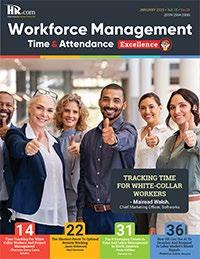



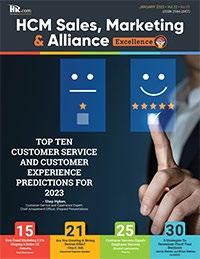

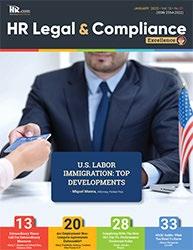
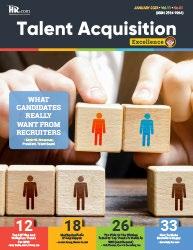



Like to submit an article? Use our online submission form or for more information go to www.hr.com/ExcellencePublications Publications 13 Targeted Publications to Reach Your Audience Informing, Educating, Enlightening and Assisting HR professionals in their personal and professional development, the Excellence series offers high-quality content through the publications!


























 Dave Ulrich
Rensis Likert Professor, Ross School of Business, University of Michigan Partner, The RBL Group
Julie Winkle Giulioni Author, Virtual /Live Keynote Presenter, Inc.’s Top 100 Leadership Speakers
Dr. Beverly Kaye CEO, BevKaye&Co.
Dave Ulrich
Rensis Likert Professor, Ross School of Business, University of Michigan Partner, The RBL Group
Julie Winkle Giulioni Author, Virtual /Live Keynote Presenter, Inc.’s Top 100 Leadership Speakers
Dr. Beverly Kaye CEO, BevKaye&Co.





 Guillermo Salazar is CEO and Co-Founder of IrisCX.
Guillermo Salazar is CEO and Co-Founder of IrisCX.





 By Frank Diassi, The Unicorn Group
By Frank Diassi, The Unicorn Group























